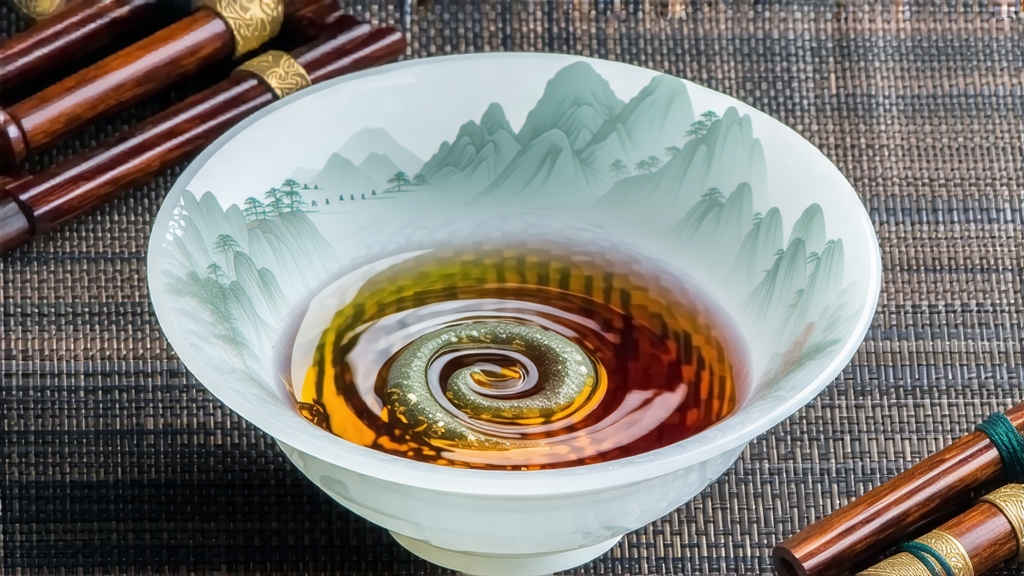
Few leaves carry as much folklore, craftsmanship, and sheer aromatic charisma as Tie Guan Yin, the “Iron Goddess of Mercy.” Hailing from the granite ridges of Anxi in southern Fujian, this oolong is simultaneously a cultivar, a style, and a cultural emblem that has perfumed Chinese life since the Qing dynasty. To understand it is to witness the moment when tea ceases to be a crop and becomes poetry pressed into form.
Legend sets the origin in the 18th century. A humble farmer named Wei Yin, devout to Guan Yin, the Bodhisattva of Compassion, dreamed one night of a hidden cave behind his village temple. Inside, a lone tea shrub shimmered in moonlight. Upon waking he located the plant, transplanted it, and nurtured it with the same reverence he offered incense. The tea he made was so fragrant that neighbors swore the iron statue of the Goddess herself had exhaled the aroma. Thus the name—Tie (iron) Guan Yin (Goddess of Mercy)—was born. Historians add that the cultivar likely mutated from older Anxi bushes, but the myth endures because every sip still feels like answered prayer.
Anxi County counts more than forty named sub-varieties of Tie Guan Yin, yet three processing styles dominate today’s market. Traditional “Nong Xiang” (heavy aroma) is charcoal-roasted in bamboo baskets for up to thirty hours, yielding cocoa-colored leaves and a liquor reminiscent of toasted almond, orchid, and warm stonefruit. The modern “Qing Xiang” (light aroma) skips roasting; instead the leaf is baked briefly at low heat, preserving a jade-green hue and explosive lilac-top note that crackles across the palate like mountain air. Between these poles lies the “Rope-fire” or middle-roast, a compromise that keeps the green soul while gifting it a caramelized jacket. Each style is still Tie Guan Yin, yet they drink like three related dialects of the same language.
Crafting any version is choreography of moisture, chemistry, and muscle memory. Picking begins at dawn when two leaves and a bud snap cleanly, the petiole exuding a faint milk-white latex. Sun-withering follows; bamboo trays are set on stone walls so the leaf loses 8–10 % of its water under subtropical light, softening cell walls for the critical next step—yaoqing, or “rocking the green.” In a waist-high barrel the tea is tossed, tumbled, and bruised for up to forty minutes. Edges oxidize rust-red while veins stay emerald, creating the signature “green leaf with red border.” A brief 20 % oxidation arrests the enzymatic browning, after which the leaf is wrapped in square cloths and rolled under mechanical pressure, gradually tightening into the iconic half-bead or “dragonfly head” shape. Finally, a 90 °C bake fixes the aroma, and the charcoal master begins his vigil, adding longan-wood embers every forty minutes through the night. When done, one kilo of finished tea has demanded 24 000 hand movements.
Brewing Tie Guan Yin is best approached as conversation rather than recipe. A 120 ml gaiwan, 6 g of leaf, and water just off the boil (95 °C) form the classic starting triad. The first 5-second rinse is not discarded but lifted to the nose—an olfactory preview called “wen xiang” that can hint at roast depth and floral intensity. Subsequent steeps lengthen in five-second increments: flash, 5 s, 10 s, 15 s, and so on. A well-made Qing Xiang will deliver six infusions of evolving spectrum—honeysuckle, fresh cream, then fennel and green apple—before the leaf surrenders its sugars. Charcoal styles prefer longer steeps; their tannins need 15 seconds to bloom into notes of roasted barley, black sesame, and finally a cooling camphor finish that the locals call yun gan hui, literally “sweet returning from the throat.” Always pre-warm the cups; the aroma clings to porcelain like incense to temple walls.
Professional cupping in Anxi follows a stricter script. Three grams, 150 ml, boiling water, five minutes. The taster first listens—yes, listens—as the liquor is decanted; a high-pitched ring suggests tight rolling and